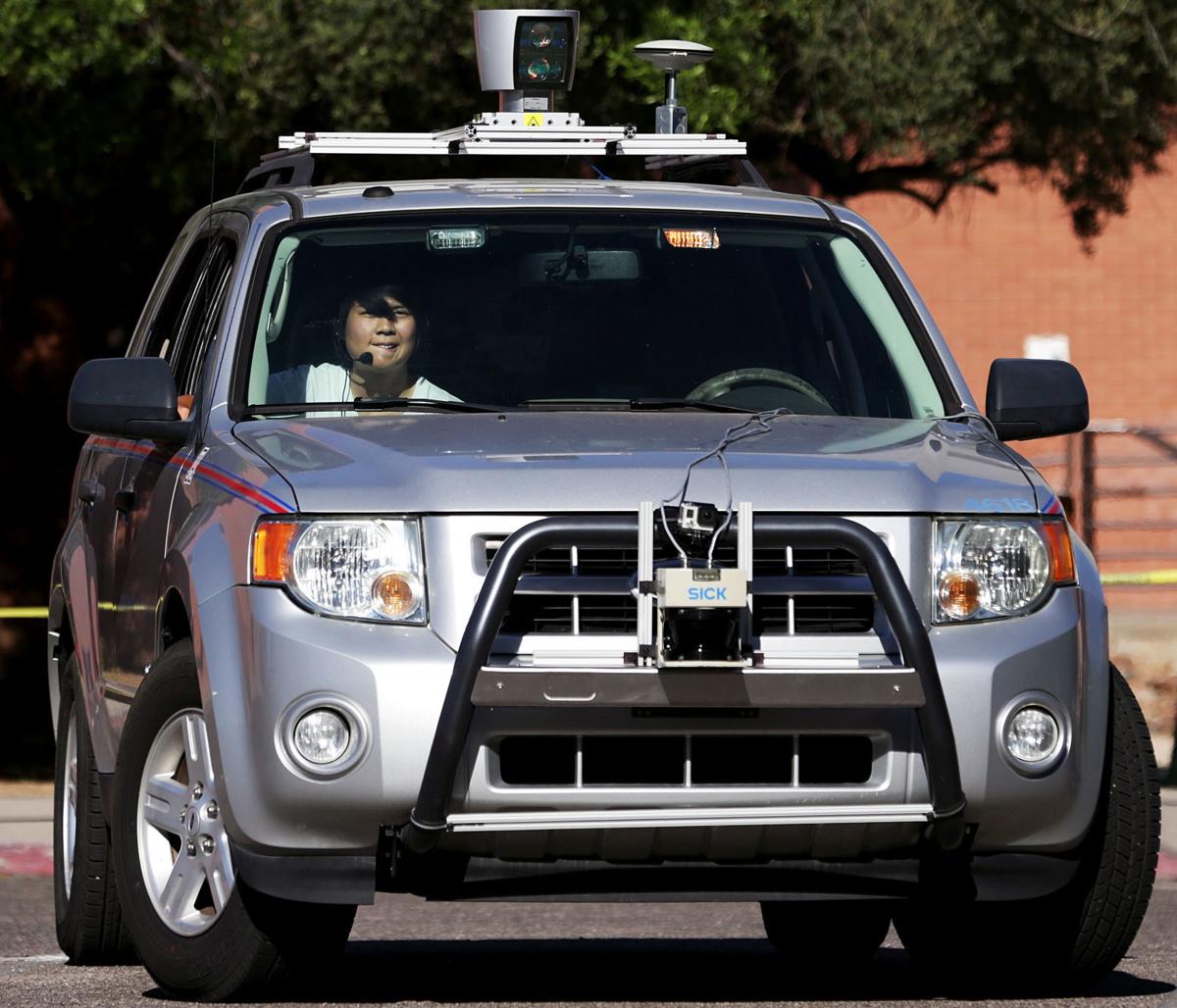PHOENIX т Four years after allowing companies to test driverless cars on УлшжжБВЅ streets, Gov. Doug Ducey is moving to make the state the center of testing for the next generation of autonomous automobiles.
In an executive order signed Thursday, Ducey created the Institute for Automated Mobility to promote cooperation among state agencies, the stateтs three universities and private industry to ascertain whatтs needed to ensure that people are safe, both inside and outside of autonomous vehicles. That includes everything from designing facilities to test the technology before itтs deployed to setting procedures to figure out what went wrong after thereтs an accident.
The goal also includes helping the state adopt policies for operation of these vehicles on state roads, ranging from who is liable in case of accidents to what happens when a police officer pulls over a car or truck and thereтs no one behind the wheel.
People are also reading…
Jack Weast, chief systems architect of the autonomous driving group of Intel, said testing autonomous vehicles is far different than the kind of testing vehicle manufacturers already do, much of it in УлшжжБВЅ. The first step, he said, is figuring out what kind of test track or facility is needed.
He said the standard oval test track used by manufacturers is of no use in determining what a vehicleтs programming will do when confronted with any given situation. And while computer simulations can help look for obvious flaws, whatтs needed to truly test a vehicleтs artificial intelligence is something closer to a real-world scenario.
That is part of what the institute will design, Weast said.
тThatтs where weтre going to look to existing crash studies and things that will help us understand ... the kind of scenarios that need to be tested to get assurance that the vehicle is making safe decisions,т he said. The goal, Weast said, is construction of a тfirst-of-its-kind test facility thatтs focused on safety verification, not just trying to create a city in the middle of the desert.т
УлшжжБВЅ first allowed companies to begin testing their self-driving vehicles on УлшжжБВЅ roads in 2015.
In March, a vehicle being tested by Uber struck and killed a woman crossing a street in Tempe.
Kirk Adams, the governorтs chief of staff, said it was not wrong to allow testing to occur here, even without answers to some of the questions Ducey now wants the institute to resolve. Adams said it hasnтt been necessary until now to answer those questions.
Take the issue of liability.
The vehicle in the Tempe accident was owned by Uber, with an Uber employee behind the wheel.
тThe line of liability is very clear in that case,т Adams said. The situation is different, he said, if sometime in the future an УлшжжБВЅn could go to a car lot and buy a fully autonomous vehicle.
тItтs your vehicle, itтs titled in your name,т Adams said, but actually is being тdrivenт with technology created by the manufacturer and its suppliers. тWhere does the liability go?т
Then there are things like the designs of streets, and planning and zoning decisions.
тHow do our roads need to be designed differently to accommodate more pullouts for cars as people purchase subscription services for autonomous vehicles rather than own it themselves?т he asked.
All that is in anticipation of Level 5 automation, meaning no human interaction.
The universities will set up testing procedures with private companies, though the only private firm to sign up so far is Intel.
Sethuraman Panchanahan, a vice president at УлшжжБВЅ State University who Ducey appointed as his adviser for science and technology, said he envisions a тconcierge-style serviceт designed to help business partners complete their research and development projects.
Sandra Watson, CEO of the УлшжжБВЅ Commerce Authority, was more direct in saying that the creation of the institute should give УлшжжБВЅ a jump over other states in attracting companies.
тWeтd like to make sure that all automated vehicle technology is being tested in our state,т she said. In addition to cars and trucks, that means drones, aerial and ground, that are not designed to carry passengers.
That last category has cutting-edge applications already being tested, Adams said.
тItтs almost the size of a golf cart, a machine in San Francisco that makes your pizza for you while itтs delivering it for you, so that it arrives at your destination hot,т he said.
He acknowledged that raises questions about the safety of having a driverless vehicle weighing several hundred pounds, with an oven at 500 degrees, on the streets.
The institute is designed to help answer questions about such safety and policy issues, he said.
Itтs also an economic development tool designed to attract industry.
тWe want УлшжжБВЅ to be seen as a place where they can get quality research and development with our universities,т Adams said.
Consider just one project at УлшжжБВЅ State University: тIf they can put sensors and mirrors on vehicles to Mars, thereтs an application for autonomous sensors here on Earth.т














